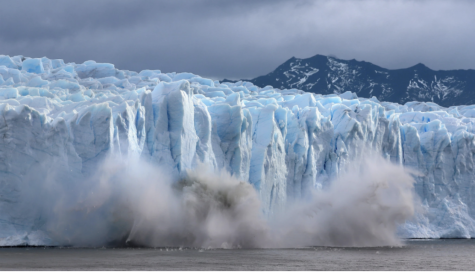Fear of Climate Change
The New Normal Isn’t Normal
Wildfires flamed across the west coast. Hurricanes and extreme heat waves were experienced all across the country. The U.N’s Intergovernmental Panel on Climate Change detailed the horrors awaiting the future if average temperatures surpass 1.5 degrees Celsius, which is 2.7 degrees Fahrenheit, above pre-industrial levels. As a result of the recent climate disasters that have been experienced throughout 2020, the discussion of climate change is dire.
The fears of climate change has appealed strongly to the younger generation, as it seems that younger people carry a stronger message In her message to the U.N. at the 2019 United Nations Climate Action Summit, climate activist Greta Thunburg declared, “You are failing us, but the young people are starting to understand your betrayal. The eyes of all future generations are upon you, and if you choose to fail us, I say: We will never forgive you. We will not let you get away with this. Right here, right now, is where we draw the line. The world is waking up, and change is coming, whether you like it or not.”

Panic of climate change consequences may stimulate a public response, revealing the importance of spreading these scientific facts to increase awareness. People must start believing and admitting to scientific facts that explain climate change’s dangerous reality.
Anticipated Effects Include:
- Temperatures will continue to rise
- Changes in Precipitation Patterns
- More droughts and heatwaves
- Hurricanes will become stronger and intense
- Sea Levels will grow 1-8 feet by the year 2100
- The Arctic will become “Ice-Free”
- Ocean Acidification: increased HCO3 concentrations in the water as a consequence of increased CO₂ concentrations.
- Loss of biodiversity: limited adaptability and adaptability speed of flora and fauna
- Health risks through rising air temperatures and heatwaves
- Increase in hunger and water crises, especially in developing countries

These ten critical possibilities can occur due to climate change, and this list is considered brief. The dangers of climate change extend beyond this list; therefore, others need to recognize and start demanding action to prevent these damaging outcomes. The Paris Agreement, an agreement within the United Nations Framework Convention on Climate Change, acknowledges: “To reach these ambitious goals, appropriate mobilization and provision of financial resources, a new technology framework and enhanced capacity-building is to be put in place, thus supporting action by developing countries and the most vulnerable countries, in line with their own national objectives.”

Heidi is a senior at Mayfield Senior School and is thrilled to be a part of Mayfield’s Crier, serving as the News Co-Editor in Chief and Assignment Manager....

